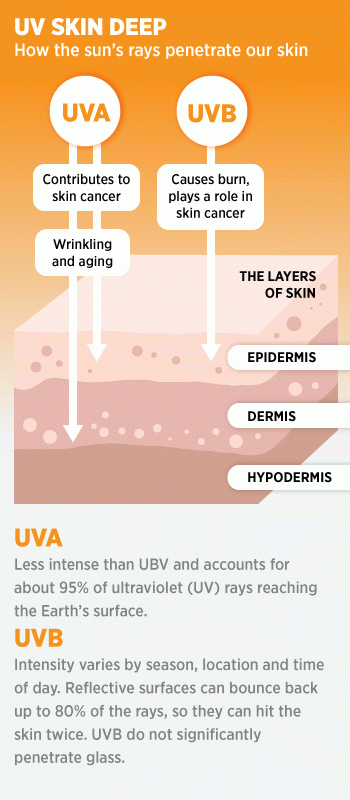Sunscreens fail the SPF test


Consumers should be “deeply concerned” they may be being misled on sun protection claims from some of the most popular sunscreen brands.
This was the outcome of an investigation by an Australian consumer advocacy group that tested six popular brands of SPF 50+ sunscreens and found many didn’t live up to their SPF claims.
“At the moment we have very little confidence levels in the claim on these products,” CHOICE spokesman Tom Godfrey told The New Daily.
• How to get healthy, glowing skin in a week
• And now for the weather forecast … HOT!
• Roads melt during lethal Indian heatwave
Just two of the six met their claims, with one product recording a test SPF of just 29, while the other three ranged between 36 and 42.
“This is a disappointing outcome and I think further investigation needs to be undertaken to find out why there is this discrepancy,” Australasian College of Dermatologists spokesperson Associate Professor Stephen Shumack told The New Daily.
“The general public would expect the SPF would be correct.”
Click the owl to see which brands passed the test.
Australia has one of the highest rates of skin cancer diagnosis in the world – two to three times the rate in Canada, the United States and the United Kingdom.
 The Cancer Council estimated between 95 per cent and 99 per cent of skin cancers were caused by exposure to the sun.
The Cancer Council estimated between 95 per cent and 99 per cent of skin cancers were caused by exposure to the sun.
Although CHOICE acknowledged there was room for discrepancies, they used the same lab as Australian manufacturers to test the sunscreens and picked the products straight from supermarket shelves.
Mr Godfrey said both the manufacturers and the Therapeutic Goods Association, which regulates the products, should be held accountable for ensuring SPF claims were met.
The difference between SPF 50+ and SPF 30+
Many countries treat sunscreens as cosmetics, but in Australia they are classed as therapeutic goods, meaning they have to meet a set of strict standards.
They apply to goods with a primary purpose as a sunscreen and some other products that contain a sun protection agent, like moisturisers with a SPF rating.
The products are tested for SPF on human skin in a laboratory by shining intense ultraviolet (UV) light on skin with no sunscreen and comparing it against skin that has had it liberally applied.
The time that it takes to burn is recorded and compared using a mathematical formula. For instance, if protected skin took 300 seconds to burn, but only 10 seconds to burn unprotected, the SPF is 300/10, equating to 30.
This number is reflected on the product, but a result of 30 won’t get a SPF rating of 30+ – for that to happen it must be at least 31. Similarly, an SPF 50+ rating requires a test result of 60 or more.
But if used properly, there was very little difference between the grades.
“If sunscreens are applied at the recommended thickness, which is 2mg per square centimetre, then there is very little difference between an SPF 30+ and a 50+,” Prof Shumack said.
How to pick the perfect sunscreen
SPF was right up there with the top reasons to pick a particular product, but it wasn’t the only way to protect against the burn.
Look for “broad-spectrum” on the label, as this indicates the sunscreen protects against both UVA and UVB. UVA causes ageing and wrinkles and contributes to skin cancer, while sunburn is caused by UVB rays, which also play a key role in developing skin cancer.
Lastly, Prof Shumack advised picking a product with a base suitable to your skin type that is “pleasant to use”.
For people with dry skin, this often means they should choose creams or ointments, while those with oily skin prefer lotions, milks or sprays.










